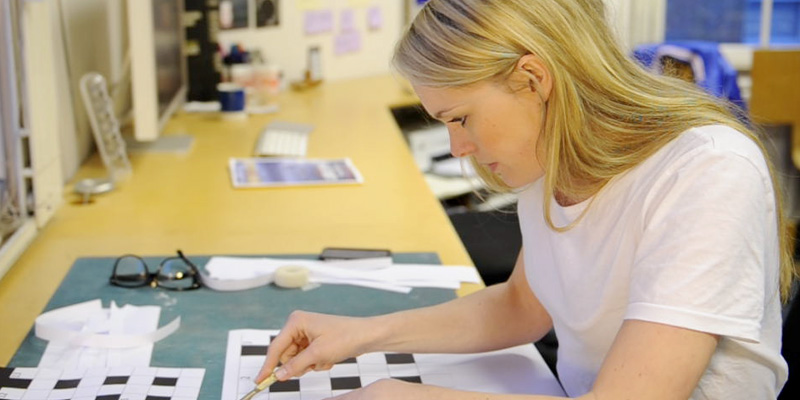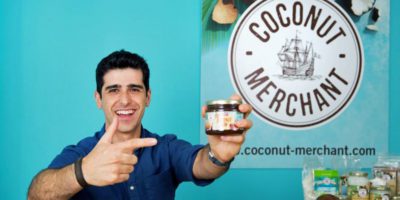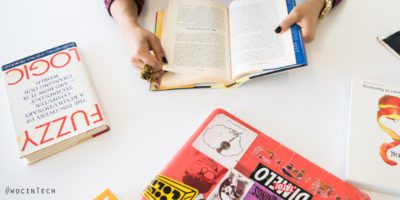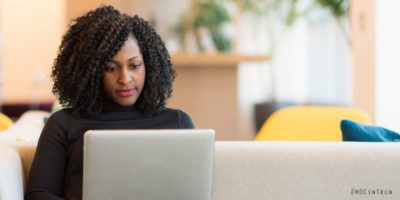Ruby Steel is senior design strategist at Smart Design who also works as part of a team of the UK’s leading inventors to create and build ingenious new life-changing solutions for people in desperate need on the BBC2 show, Simon Reeve’s Big Life Fix. Ruby graduated from Kingston University and then went on to gain a Master’s degree in Innovation Design Engineering at the Royal College of Art and Imperial College of London. Since then she has been awarded two Helen Hamlyn Design Awards for Creativity and Inclusive Design, and has received honourable mentions from Core77 Design and RSA for her design solutions combating issues such as social isolation in older people.
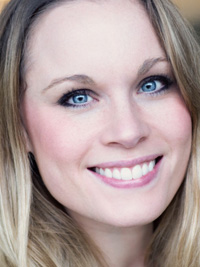
“…so far, the days I gave the finished products to the people I was designing for have been some of the most memorable of my life…”
Discovering design has the power to change people’s experiences of life for the better
I currently work at a company called Smart Design and I have been working in design for twelve years. I started out at art school where I did an art and design foundation at Kingston University. I specialised in graphic design and then moved on. When I graduated from the graphic design course that I wasn’t following the typical route of other original designers. I was always keen to figure out how I could be more a part of the process of moulding and changing experiences for people.
I was always very influenced by real people and their stories. When I was 17, one particular lady and came to give a talk at my school about her experiences of living with HIV. I was blown away by her honest and bravery in sharing her story and the way she was opening people’s minds and changing people’s opinions about things. I was so inspired. That made me want to use design to change people’s minds.
So, I started doing more design work and doing more creative work. I realised that I wanted to make experiences for people like her and anyone that has a tougher day to day life than most people. I wanted to be able to create better experiences for them. So, this is why I started as a visual designer but then I moved into product service and digital design because that was where I was able to change peoples’ experiences of life for the better.
I did all sorts of really strange things after I graduated from Kingston – all my peers went off into advertising, fashion, photography – all sorts of different things – but I didn’t want to do any of that. I wanted to go into product and digital and service design, so I had to find my own way.
I did loads of design volunteering. I worked in a psychiatric hospital. I volunteered because I was passionate about the healthcare sector and what experiences were like for in-patients in hospitals. I was always setting myself my own brief to come up with hypothetical new things for people.
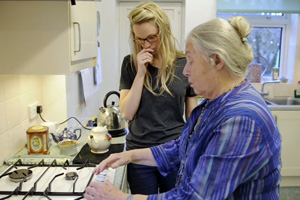
Harnessing the power of people-centric design
I applied to the Royal College of Art to do a Masters in Innovation Design Engineering (that was also an M.Sc. at Imperial College, London). A friend recommended the course because I was doing more projects about new ways of thinking and new things within design. I applied thinking there was absolutely no way that I was going to get in because most of the people on that course came from engineering backgrounds and I didn’t have that.
What I did have though was an understanding of people and a lot of work to show I was quite practised in design research, ethnography, generating insights and coming up with ideas. So, I applied and, amazingly, I got an interview and was offered a place to start in October 2010. I was two years out of my Bachelor of Arts at this stage.
Those two years I spent at the Royal College of Art were a massive turning point for me because it meant that not only did I start to really choose my craft, but I also started to understand all the different kinds of technology that was available. I didn’t learn to be an engineer exactly. It is more that I learned how to work with engineers or how to work with different kinds of designers. The course is all about mixing people with different skillsets. Because it was a Masters and it was quite self-directed – you do what projects you choose.
All my projects were essentially looking at a person or a group of people who were struggling for one reason or another. One of my biggest projects was on diabetes – living with diabetes, and how services / products might be able to make living with diabetes easier. The second project was looking at the aging population and how to combat social isolation in older people.
I came out of the Royal College of Art with a huge body of work and it meant that I was off in the right direction. That is how I ended up in, a multi-disciplinary studio where we do products, digital and service design.
My role at Smart Design on a day to day basis
Smart Design is a consultancy. We work with clients from a real variation of industries – everything from finance to transport to healthcare. Smart London is the smaller arm of Smart New York. Smart is 35 years old and we traditionally come from a very human-centred product design perspective. The company in New York is about 80 people and here in London we are about 20. Our office usually has two big projects going on at one time.
As a design strategist in the company, so I am a thread through the project, first scoping the project and essentially determining what we are going to make. I then ensure we are making the right thing and that we keep making the right thing all the way through.
At the beginning of a project the activities I would be doing would be design research. I would be going out into the world. I do loads of field research including things like observation, watching people in different environments. It might be a public place, it might be a hospital or it might be a shopping mall, or it might be a car – all the different places where human beings spend time.
I will go out and watch people, observing their behaviour and learning from that. I would be doing interviews, co-creation sessions where you start coming up with an idea and then you eventually take it to the person that you are designing for. We get their input as early possible and as regularly as possible.
I would either be out and about doing things like that or I go to the studio and analyse all the stuff that I have found out. I may also be brainstorming around what the new thing is that we are proposing our client makes – that might be an object or it might be a new digital service or an app or a website. Usually it is all of these things because we tend to work in a multi-experiential form. It is always quite journey based and we will be designing things that are necessary along the way.
Becoming a “Fixer” on Simon Reeve’s Big Life Fix
The Big Life Fix is a BBC2 design documentary that sees a team of designers – of which I am one – called “the Fixers” presented with challenges across the UK where individuals are struggling for one reason or another. Often, this is because of a physical disability and the Fixers are tasked with creating a design prototype or a solution to help the person achieve something that they particularly wanted to achieve.
The Fixers make up a design engineering team: We have got a material scientist, an electronic engineer, we have got coders – really varied skill sets.
The first series had three episodes and three stories per episode, so nine stories in total. We had quite a range of different projects. For example, there was a young boy called Oscar who was born without any feet or hands and he wanted to be able to ride a BMX bike like his friends. So, the design challenge there was to find a way for him to be able to ride a bike safely.
Another example was a girl named Emma who was diagnosed with Parkinson’s when she was 29, so very, very young. She is a graphic designer and unfortunately the Parkinson’s causes tremors, as it does for many Parkinson’s sufferers, and it meant that as a designer herself she wasn’t able to draw or even write her name, so the fix there was to try and find a way for her to be able to do so.
There is a new series coming out next year which sees four episodes of twelve new stories of children and adults – all completely different kinds of people. We have a Children in Need special that comes out on the 8th November where we help three children.
So happy and excited to be back on set for @BBCTwo #biglifefix series 2!! Great first day! pic.twitter.com/jCzZjJh729
— Ruby Steel (@rubysteel) June 6, 2017
The most memorable days of my life
Being part of the Fixes has been the biggest honour and the best thing that has ever happened to me in my entire career. This is largely due to the fact that it is an opportunity to get to know someone and to build something that helps them on a one-to-one basis. So, not only do I have the pleasure of meeting them, getting to know them and coming up with a design, but I actually get to give them the product at the end.
As a professional designer I’m designing things for people all the time, but you design for a market of people – a mass market essentially – so you do sometimes get the opportunity to see your creation out there in the world. This is completely different because it is a one-on-one experience, so you actually see them using the thing that you have made right in front of you. I know that so far, the days I gave the finished products to the people I was designing for have been some of the most memorable of my life.
How the advancement of digital technology is enabling inclusion of more people in society
Digital inclusion is a fascinating topic. In my opinion, digital can be both our biggest ally and also our greatest enemy in a way. It can do so much, but actually a lot of digital products are aimed at mass market. Products which are completely digital and can offer a really great service, but do they don’t necessarily think about the people that could benefit from them the most.
Whether it is a visible disability that doesn’t allow you to use a digital product because you cannot see the screen or you don’t have the dexterity to use a phone, or maybe for our vast aging population it is just something that has passed you by, there are loads and loads of opportunities for these two worlds to come together, but it is not happening everywhere yet.
Showing girls and women that careers in design, engineering and tech are something for them to aspire to
The thing that I love about the show is the fact that it is promoting design, tech and engineering to a wider audience that wouldn’t otherwise necessarily understand the value in it by showing these emotive stories.
The fact that we can promote that girls and women actually have a vital role to play in the design and tech world is just endlessly valuable because product design and engineering are still such male dominated worlds, which currently, for whatever reason, are not necessarily appealing to young girls.
If the show somehow makes them think: “Actually, this is a career path for me.” This is wonderful because problem solving needs all genders. It needs different kinds of thinking and different kinds of perspective so the more diversity that we can get in the design industry and the tech industry, the better.
TOMORROW sees the final episode of #biglifefix @BBCTwo 9pm Can’t wait to watch @zoelaughlin @haiyan and your lovely boys @vickser22 pic.twitter.com/scUyjEzaHQ
— Ruby Steel (@rubysteel) December 20, 2016
Tech for good – a great motivator
Tech for good is such a great motivator to recruit diverse talent, regardless of gender, because we are all human, and humans connect with other humans.
It is part of our make up too – if we are presented with another human who is suffering, and we are looking at them one-on-one and it is not just a number, it is not just a statistic, it is actually a human with a name and a face that you can look at and see that they are having a hard time, if you think you can do something to help, it is just human nature to want to change to do that. Tech is such a powerful driver for getting people more interested in making things better.
One version of that could be medicine, but there are lots of different ways that you can effect change. Our whole world is made up of experiences that have been designed or engineered by someone and having the opportunity to do something good for someone and make something better for someone means the reward is so high. It is very compelling and motivating.
On the horizon
Smart Design is actually founded on the idea that it is all about making better experiences, so we are always looking to take on projects where essentially the product or the service is going to make a better experience for someone that particularly needs it.
I am incredibly excited about the projects that are coming out in Big Life Fix next year and the Children in Need episode because again, they are just examples of how tech can be used for something that is bigger than all of us.
For example, the Children in Need episode that is coming out on the 8th November is looking at a visually impaired child in a mainstream school who isn’t able to play in the playground with his friends, so the show was about using tech to enable him to do that. The playground can be a very chaotic and intimidating environment for children with disabilities, so if people can watch the show and be inspired to see how tech can be used to make environments or products and services more inclusive, it means that we are starting to move closer to a world where having a disability is less of a challenge because tech is becoming an enabler for all.
https://smartdesignworldwide.com/people/ruby-steel/
https://www.linkedin.com/in/ruby-steel-3766671b/

